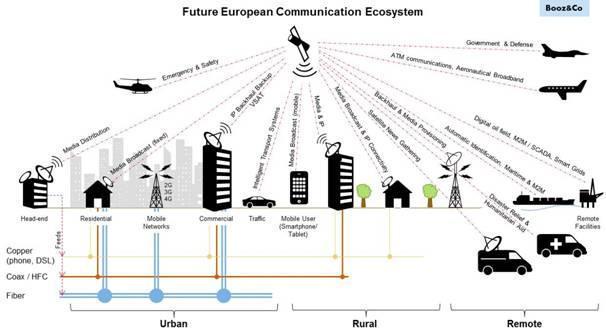In a very interesting document of the IEEE (Institute of Electrical and Electronic Engineering http://iot.ieee.org/newsletter/march-2016/the-internet-of-space-ios-a-future-backbone-for-the- internet-of-things.html) deals with the possibility that in the future a new branch the internet will appear, but now into the space: the Interne of Space or IoS.
The idea comes from the fact that the predictions show 25-50 billion objects interconnected through the Internet by the year of 2020, which will require the worldwide network a fantastic ability to manage this huge amount of data generated.
Moreover, it should be taken into account that a good portion of the devices that will be connected to the internet will do it wireless, and in positions increasingly far from any center which can handle the data and send them to the network.
How to solve this? What will be the next challenge of the internet of things and to be able to get all this to work anywhere in the world and eventually out of it.
A concept of how this would work can be given by the image of a future communication ecosystem designed to be used in Europe, shown in Figure 1.

The idea is to manage communications from space with satellites positioned so you can keep in touch with anything you want through internet access.
It is not a new idea. In 1990 we had many space satellites that were used in project communication services such as Iridium, Teledesic, Globstar and others.
However, maintaining such satellites was extremely expensive which prevented a wider use of this technology, but with the development of new technologies, a different approach is possible nowadays.
New technologies allow not only cheaper satellites to be obtained, but also much smaller ones. In the documentation of the IEE it talks about satellites of the size of bread toasters which could be launched by dozens in low orbits and thus get a coverage as good as the one of the satellite in high orbits (geostationary), but with much lower cost in the launching.
Another advantage of the low orbit is the reduction of latency (time for the signal to go back and forth) which in the case of the high orbit becomes significant.
Recently, SpaceX in partnership with Google announced a multi-million dollar investment to launch about 4000 satellites in low orbits around the world. These satellites could take the Internet access anywhere in the world, as in the case of GPS, at anytime there will be a satellite passing over us to give us access to the network.
Other companies will be working on their own systems, even including airlines to offer passengers access to the internet anywhere, which is now extremely expensive as they use conventional satellites.
In the creation of this new technology, in addition to 5G we have the use of millimeter waves and modulation techniques that allow us, with very little power, to have the range required to access satellites.
Millimeter waves would be used in order to obtain, at the same time, concentrated power and data transmission capacity.
But the boldest idea that is being spread is that the system would extend to the entire solar system putting in solar orbit an enormous amount of satellites, perhaps beyond Pluto, and thus the access to the internet would have new borders, wider than our own physical access capability.
Many new things are about to come up in the near future.



